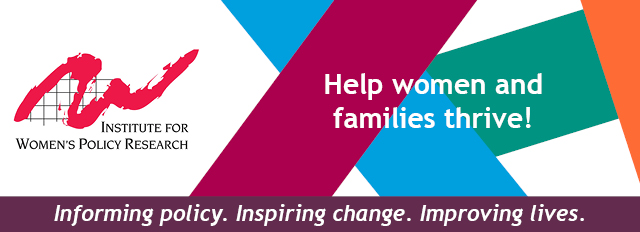RESEARCH MAKING THE NEWS
The Class of 2019 are More Likely to be Older and Have Children
Jillian Berman |  | February 2019
| February 2019
Like 40% of students who enter college, life got in the way of Shawnte’ Cain completing her degree. Cain, 39, began her college career in 1997 at Wayne State University in Detroit. She successfully made it through three years at the school, but just as she could see her degree on the horizon, her grandmother fell ill. School fell by the wayside as Cain cared for her and her own financial obligations rose.
Citing: Completing College – National 2018 – by NSC Research Center, December, 2018
Read the Full Article | Tweet this | Download PDF
How the 1% Profit Off of Racial Economic Inequality
Derick Asante-Muhammad and Chuck Collins |  | January 2019
| January 2019
As people of color make up a larger share of the diversifying US population, that persistent racial wealth divide is bringing down America’s median wealth. But while wealth at the middle falters, it’s soaring at the top. In other words, the 1% are profiting off ongoing racial economic inequality. All this is happening against a backdrop of seemingly good economic news. Black and Latino unemployment rates reached historic lows in 2018, and median income has slowly inched up for all households in the last few years
Citing: Dreams Deferred: How Enriching the 1% Widens the Radical Wealth Divide at Institute for Policy Studies, Jan, 2019
Read the Full Article | Tweet This | Download PDF
The Global Gender Gap will Take More Than 100 Years to Close: Here Are the Countries with the Highest and Lowest Gender Gap around the World
Will Martin and Skye Gould |  | January 2019
| January 2019
It will take more than 200 years for economic gender equality to emerge, and 108 years to completely close the global gender gap across politics, health, education, according to the latest report from the World Economic Forum. The WEF’s annual Global Gender Gap Report compares attitudes towards gender equality around the world. It considered factors such as educational opportunities available to each gender, life expectancy, literacy rates, the number of women in professional positions, and in positions of power in each country.
Citing: The Global Gender Gap Report 2018 at World Economic Forum, Dec, 2018
Read the Full Article | Tweet This | Download PDF
Millennial Women Are Winning the Jobs Recovery as Men Struggle
Jeanna Smialek |  | January 2019
| January 2019
Her case is far from unique. The share of 25- to 34-year-old women who are employed or looking has staged a sharp turnaround since 2016. The group since December 2015 has accounted for 86 percent of growth in the workforce of prime-working-age women, who are 25- to 54-years-old, and for 46 percent of gains in the prime-age labor pool as a whole.
Citing: Current Employment Statistics Highlights by Analysts of the National Estimates Branch Current Employment Statistic Survey at U.S Bureau of Labor Statistics, Jan 2019
Read the Full Article | Tweet This | Download PDF
NEW RESEARCH REPORTS
The Number of Unionized U.S Workers Edged Lower to the 16.4 Million in 2018
Heidi Shierholz | Economic Policy Institute | January 2019
New data on union membership from the Bureau of Labor Statistics released on Friday showed 16.38 million unionized workers in 2018, down from 16.44 million in 2017. However, because employment of wage and salary workers grew by 1.6 percent between 2017 and 2018, the share of workers represented by a union declined by a more significant amount, from 11.9 percent to 11.7 percent.
Gender in the Labor Market: the Role of Equal Opportunity and Family- Friendly Policies
Elizabeth L. Doran, Ann P. Bartel, and Jane Waldfogel | National Bureau of Economic Research | December 2018
Although the gender wage gap in the U.S. has narrowed, women’s career trajectories diverge from men’s after the birth of children, suggesting a potential role for family-friendly policies. We provide new evidence on employer provision of these policies. Using the American Time Use Survey, we find that women are less likely than men to have access to any employer-provided paid leave and this differential is entirely explained by part-time status. Using the NLSY97, we find that young women are more likely to have access to specifically designated paid parental leave, even in part-time jobs. Both datasets show insignificant gender differentials in access to employer-subsidized child care and access to scheduling flexibility. We conclude with a discussion of policy implications.
Female Earnings Inequality: The Changing Role of Family Characteristics on the Extensive and Intensive Margins
David Card & Dean R. Hyslop | National Bureau of Economic Research | December 2018
Although women make up nearly half the U.S. workforce, most studies of earnings inequality focus on men. This is at least in part because of the complexity of modeling both the decision to work (i.e., the extensive margin) and the level of earnings conditional on work (the intensive margin). In this paper we document a series of descriptive facts about female earnings inequality using data for three cohorts in the PSID. We show that inequality in annual earnings of women fell sharply between the late 1960s and the mid-1990s, with a particularly large decline in the extensive margin component. We then fit earnings-generating models that incorporate both intensive- and extensive-margin dynamics to data for the three cohorts. Our models suggest that over 80% of the decline in female earnings inequality can be attributed to a weakening of the link between family-based factors (including the number of children of different ages and the presence and incomes of partners) and the intensive and extensive margins of earnings determination.
Gender Equality and Poverty Are Intrinsically Linked
Rense Nieuwenhuis, Teresa Munzi, Jorg Neugschwender, Heba Omar, & Flaviana Palmisano | UN Women | December 2018
This discussion paper provides an updated analysis of gendered economic inequality in high- and middle-income countries. A review of the literature demonstrates that such an analysis needs to explicitly recognize that gender, poverty, and (economic) inequality are intrinsically linked. Specifically, the paper addresses two sets of questions: First, how do intra-family resource allocation and distribution patterns both reflect and shape gender inequalities in power and well-being, and what factors—including policy-related ones—can mitigate these inequalities? Second, how do families as gendered institutions contribute to broader socio-economic inequalities, and what can be done to reduce/reverse these inequalities? Using data from the LIS Database, this paper shows considerable differences among 42 countries with respect to how likely women were to have their own income. The period from 2000 to 2010/2014 saw increasing rates of own incomes as well as women’s incomes constituting larger shares in total household income. A key finding is that, in countries where many women have an income of their own, relative poverty rates are lower.
Big Business Bias: Employment Discrimination and Sexual Harassment at Large Corporations
Philip Mattera | GoodJobsFirst | January 2019
Most of the suits ended in confidential settlements. Looking only at cases with disclosed verdicts or settlements, 189 Fortune 500 companies have paid $1.9 billion in penalties: $356 million in 238 cases resolved by the U.S. Equal Employment Opportunity Commission, $65 million in 85 cases handled by the Office of Federal Contract Compliance Programs, and $1.5 billion in 176 private lawsuits. Adding in cases against corporations from the rest of the Fortune 1000, the Fortune Global 500 and the Forbes list of America’s Largest Private companies brings the total of disclosed penalties to $2.7 billion, including $588 million from 329 EEOC actions, $81 million from 117 OFCCP cases, and $2 billion from 234 private lawsuits.
Americans’ Perspectives on New Retirement Realities and the Longevity Bonus.
Merrill Lynch Bank of American Corporation | January 2019
Age Wave, in partnership with Bank of America Merrill Lynch, undertook nine landmark studies focused on all aspects of life in retirement. To complete this body of work, the Age Wave team reviewed thousands of papers, reports and datasets, conducted over 140 expert interviews and 43 focus groups, surveyed 50,000+ respondents, and put in 70,000+ collective work hours.
Racial and Ethnic Disparities in Access to and Use of Paid Family and Medical Leave: Evidence from Four Nationally Representative Datasets
Ann P. Bartel et al. | Monthly Labor Review | January 2019
Statistics on overall access to and use of various types of paid family and medical leave for the U.S. workforce are widely available. However, much less is known about disparities in paid-leave access and use by race and ethnicity. This article examines this question, using data from four nationally representative surveys—the American Time Use Survey Leave Module, the Annual Social and Economic Supplement to the Current Population Survey, the National Study of the Changing Workforce, and the Survey of Income and Program Participation. The article’s most consistent finding is that Hispanic workers have lower rates of paid-leave access and use than their White non-Hispanic counterparts.








 IWPR is pleased to announce that Rhiana Gunn-Wright, the Mariam K. Chamberlain fellow at IWPR since September 2011, has been
IWPR is pleased to announce that Rhiana Gunn-Wright, the Mariam K. Chamberlain fellow at IWPR since September 2011, has been 



You must be logged in to post a comment.